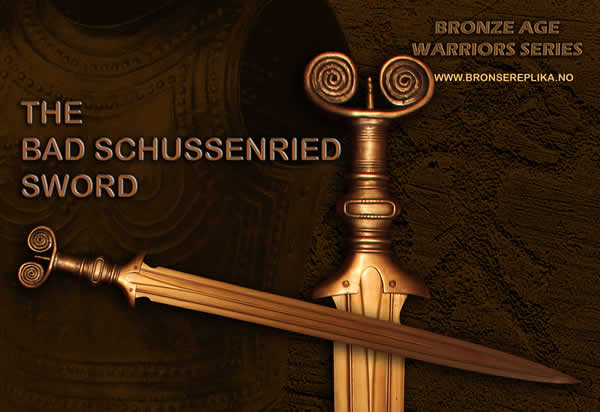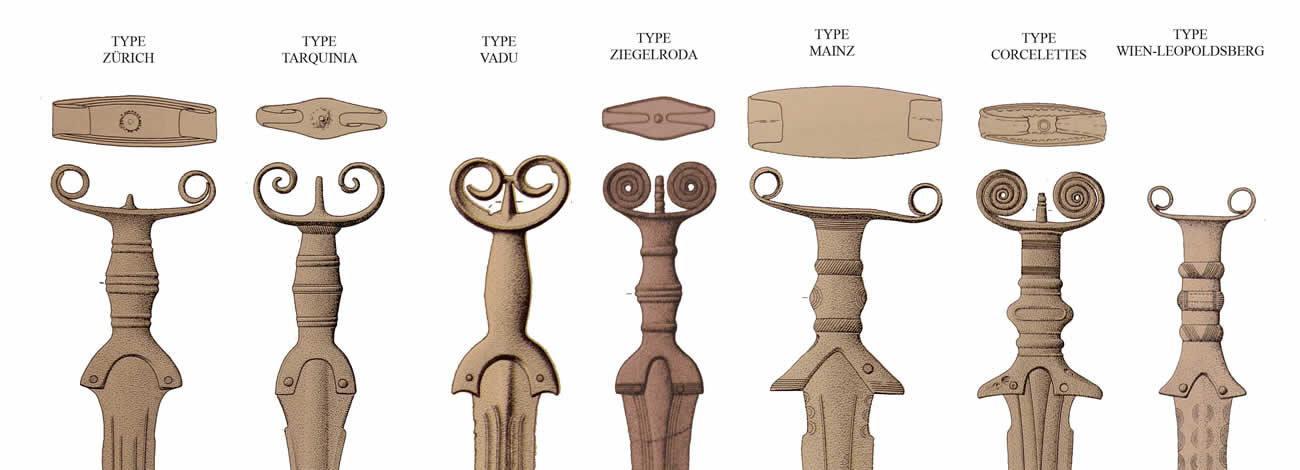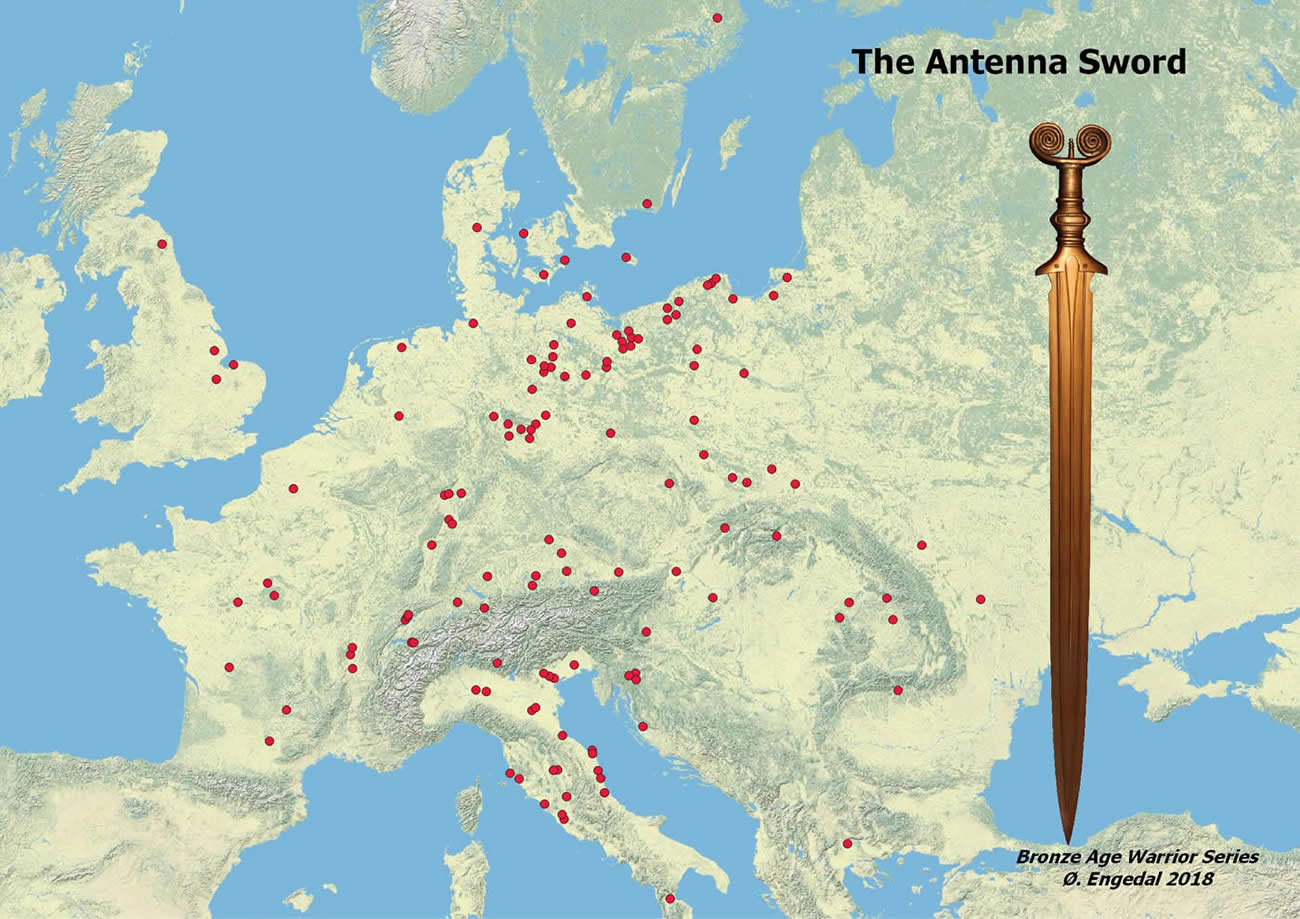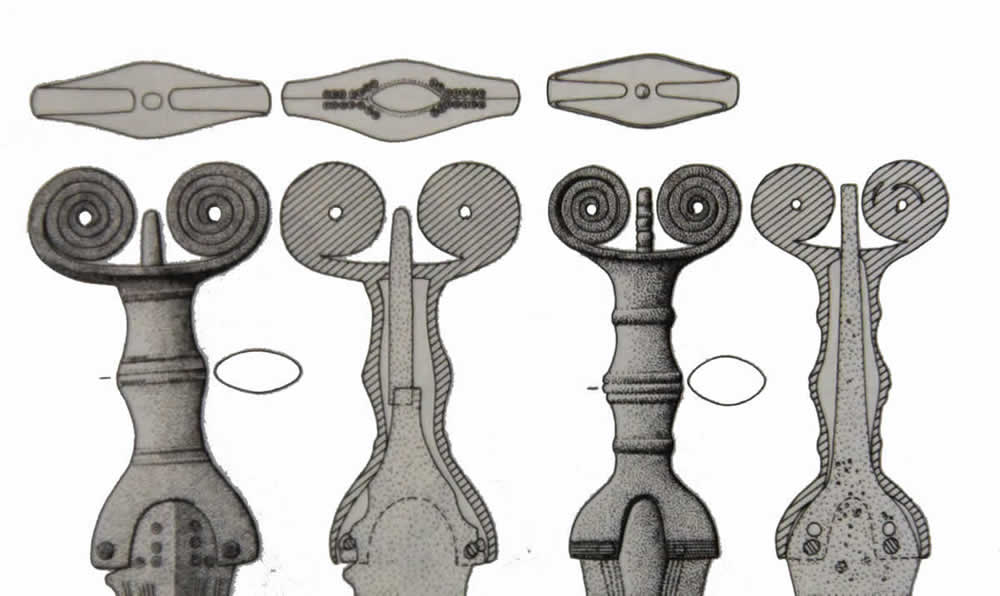
The Antenna sword
The Antenna group swords date mainly to the mid and late Urnfield period (HA B2, HA B3), but originated in HA B1 and are evidenced as late as HA C. This means that it had a time of production and use from c. 950 B.C. to 650 B.C. Thus, along with types Auvernier, Mörigen and type "Rundknauf", the Antenna swords end the long European tradition of full bronze hilts. The some 135 known Antenna swords may according to the most recent classification (Stockhammer 2004) be grouped into seven types:

Classification of Antenna swords according to Stockhammer (2004), compilation by Ø.Engedal 2018.
Antenna swords are known from England to the Rumenian-Moldovian border, from Central Sweden to southern Italy.

Several methods of production seems to have been used. Standard is a blade with a tang running through the hilt and through the pommel. Some variants have separate spiral mounted on the hilt, while the more common seems to be pommel and hilt cast together. And there is the issue of wether the spirals were hammered out and curled up after casting, or wether they were cast "in spiral". This is also linked to the common issue of wether ornaments were cast or added through engraving/chasing. Finally, some hilts have no rivets and seems to have been cast onto the blade.
X-rays show that it was common practice to save material and loose weight in the hilt by casting hilts with rather thin walls.

X-ray view of two Antenna swords type Ziegelroda from eastern Germany (Wüstemann 2004: No. 458-459).
The replica of the Bad Schussenried is cast using the lost-wax method, making the spiral in wax rather than in bronze. This does not mean that the spiral is massive - it is possible to make bronze flow through the individual windings. In my view this was within the capabilities of many Bronze Age foundries. An alternative would have been to place gates at the place of the spirals, and than hammer these between cycles of annealing into long bands that could be curled up. This would have been a rather time consuming method, but this is what most researchers have implied.
Litterature:
Bianco Peroni, V. 1970: Die Schwerter in Italien. Le spade nell'Italia continentale. Prahistorische Bronzefunde IV, 1. Stuttgart, Franz Steiner Verlag.
Krämer, W. 1985: Die Vollgriffschwerter in Österreich und der Schweiz. Prahistorische Bronzefunde IV, 10. Stuttgart, Franz Steiner Verlag.
v. Quillfeldt, I 1995: Die Vollgriffschwerter in Süddeutschland. Prahistorische Bronzefunde IV, 11. Stuttgart, Franz Steiner Verlag.
Sprockhoff, E. 1934: Die germanischen Vollgriffschwerter der jüngeren Bronzezeit. Berlin/Leipzig 1934.
Stockhammer, P. 2004: Zur Chronologie, Verbreitung und Interpretation urnenfelderzeitlicher Vollgriffschwerter. Tübinger Texte 5. Verlag Marie Leidorf GmbH.
Wüstemann, H.2004: Die Schwerter in Ostdeutschland. Prahistorische Bronzefunde IV, 15. Stuttgart, Franz Steiner Verlag.
|